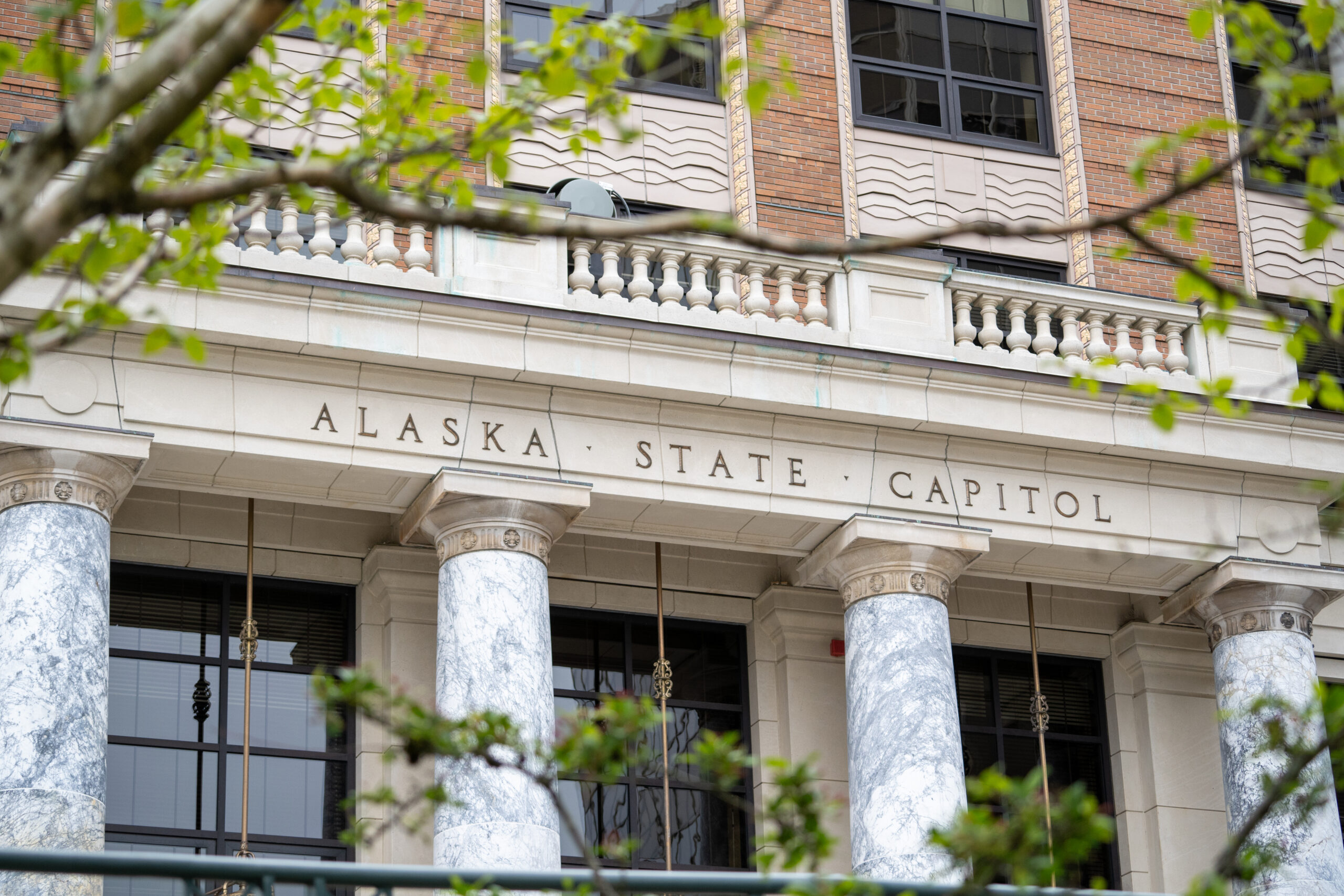
State lawmakers passed several energy bills this session aimed at updating the Railbelt’s electrical grid and speeding up the transition to renewable energy. But at least one notable renewables bill failed.
Alaska Public Media’s state government reporter Eric Stone and climate change reporter Kavitha George followed the progress during the last legislative session, which ended May 16.
Listen:
[Sign up for Alaska Public Media’s daily newsletter to get our top stories delivered to your inbox.]
This interview has been lightly edited for length and clarity.
Casey Grove: It seems like there were bills addressing utilities and electrical grids and clean energy this session. Why is there such a focus on Alaska’s energy systems right now?
Eric Stone: The big driver is that the Railbelt — that’s everyone from Homer and Seward on up to Fairbanks, about 70% of the state’s population — is facing an energy crunch. As many people know, Cook Inlet natural gas producer Hilcorp has told utilities it expects production to decline — it’s not as economical as it once was to drill there. And that means Railbelt utilities are scrambling to find other energy sources to keep the lights on and keep homes heated for this big swath of Alaska. Utilities are looking at importing natural gas — that’s one option — but there are also a lot of opportunities to make our grid more efficient and invest in renewable energy sources.
And more broadly, as folks around the globe try to decarbonize, a lot in the energy world is changing. Gov. Mike Dunleavy said today at the Alaska Sustainable Energy Conference that he wants to make sure Alaska isn’t left out:
Gov. Mike Dunleavy: “It’s my hope and it’s my goal that Alaska is an absolute leader across the globe in everything from microgrids, how to sequester carbon. How do you integrate things like coal and solar and wind so that it benefits everybody?”
ES: And that’s what a lot of these bills focused on this session.
CG: What’s an example of a bill that passed to advance renewable energy?
Kavitha George: One bill that almost everyone is excited about is the community solar bill. So, one option for homeowners who want to lower their electric bills is to install solar panels on their roof. That powers your house and you can actually sell any excess power back to your utility. But that’s not an option for everyone, for example renters, or people who have shady roofs. Community solar is a way that theoretically, anyone can get in on the benefits of small-scale solar. By partnering with their utility, a bunch of neighbors can buy in on a small solar project together. They pay a sort of subscription fee to be a part of the project, and then as the project generates power which gets sold back to the utility, they all share in the earnings, which basically show up as a discount on their electric bills.
A bill to regulate community solar projects and make it easier to get them off the ground passed the Senate unanimously and had a big margin in the House.
ES: And I’ll jump in here with another example — the green bank. You might have heard of this idea. They’re popping up around the country. Basically, it’s a way for the state to help provide funding for renewable energy projects.
And Alaska will be joining the ranks here pretty soon thanks to House Bill 273, which sets up a green bank within the Alaska Housing Finance Corporation. And it comes at a good time — the Biden administration just announced in April that AHFC and the Alaska Energy Authority will get more than $60 million for community solar projects and financial assistance for rooftop solar aimed at low-income and disadvantaged households. Gov. Dunleavy called out the green bank bill today:
Gov. Dunleavy: “It will unlock tens of millions of federal dollars from the Inflation Reduction Act. Creation of this fund will help Alaskans compete for historic federal funding opportunities to improve the energy profile of their homes and businesses.”
ES: And of course, it’s one thing to build a new solar farm or wind turbine, but it’s another thing entirely to get power where it needs to go. Casey, you and I talked about this a week or so ago, but there’s another bill that basically makes it cheaper to move power around on the Railbelt, from Homer to Fairbanks. That’s House Bill 307.
And speaking of moving power, I’d be remiss not to mention the new high-voltage power line across Cook Inlet the Alaska Energy Authority is looking to build. That was announced last fall. Half of the $400 million project is funded by the feds through the Bipartisan Infrastructure Law, the other half from the state over the next eight or so years. And it’ll be basically a 50-mile undersea high-voltage cable running under Cook Inlet from the Kenai Peninsula out to Beluga. In addition to moving power up the Railbelt, it’s also supposed to be kind of a backup power line in case another one has to be taken offline, like what happened during the Swan Lake fire in 2019. And if there’s money left over, it would also pay for battery-based power storage in Anchorage and Fairbanks.
There’s about $66 million in state and federal funding for that this year.
So, yeah, lots happening on renewables — as Anchorage Democratic Sen. Bill Wielechowski put it, “the Railbelt is going green, and it’s out of necessity.”
CG: Let’s talk about something that didn’t pass — the renewable portfolio standard. Kavitha, what is a renewable portfolio standard and why was it so controversial?
KG: A renewable portfolio standard, also known as an RPS is a policy that tells utilities they must meet certain targets for renewable energy by a set time. This session’s bill said that Railbelt electric utilities would have had to source 25% of their energy from renewable sources by 2027, 55% by 2035 and 80% by 2040. And again, the idea is to decrease the dependency on natural gas, which is becoming more scarce — and if utilities start to import it, will become quite expensive. A federal study earlier this year actually showed that hitting a renewables target of around 75% by 2040 would be the least expensive path forward.
This bill had a lot of support from clean energy advocates, lawmakers on both sides of the aisle and even Governor Dunleavy. But it’s definitely faced opposition from major utilities who are not on board with the penalties they would face for failing to meet these targets. In January, Republican Senator Jesse Bjorkman of Nikiski said very publicly that he was going to block the bill by not letting it pass out of the Senate Labor & Commerce committee, which he chairs. And that’s exactly what happened, it sat in committee and never went much further than that, even on the House side.
Clean energy advocates I’ve spoken to said they were disappointed the RPS failed, but they remain hopeful that with more education and outreach, it has another shot next year. Utilities are still not quite at the point where they are locking into contracts to import natural gas and so there’s a little more runway to make a big push for renewables.
Kavitha George worked at Alaska Public Media from 2021 to 2024. Her coverage areas included statewide politics and climate change.
Eric Stone covers state government, tracking the Alaska Legislature, state policy and its impact on all Alaskans. Reach him at estone@alaskapublic.org and follow him on X at @eriwinsto. Read more about Eric here.






